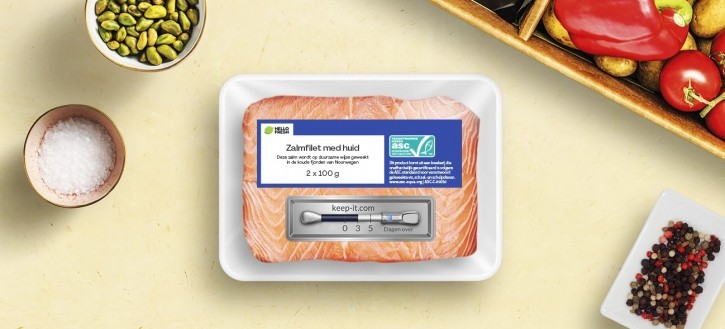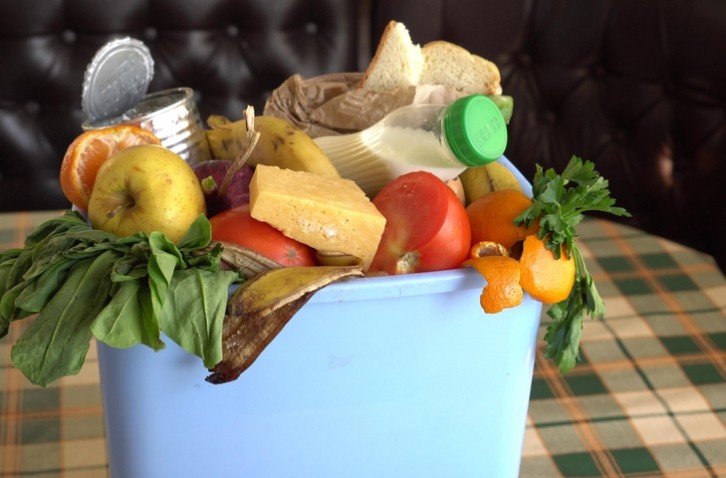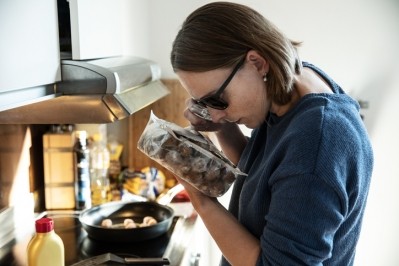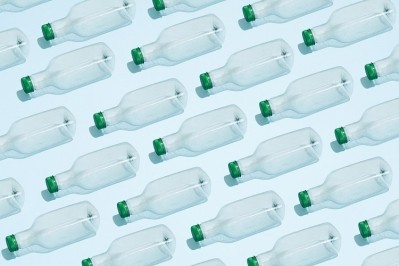Exclusive
‘We know that time temperature indicators have huge potential to reduce food waste’: Behind HelloFresh’s push for regulatory changes to enable new food labelling solutions to be unboxed

‘Best before’ and ‘use by’ expiration dates lead many consumers to discard supposedly spoiled food that is perfectly safe to consume. The problem exacerbates food waste, of which the vast majority, in developed nations at least, occurs in the home.
Current solutions include retailers removing the ‘best before’ date completely, or swapping a ‘use-by’ for a ‘best before’ date where safe to do so on fruit, veg and dairy products, and encouraging shoppers to use their judgement, like a sniff test, to help reduce food waste in the home.
HelloFresh believes that time temperature indicators (TTIs), which work by showing the shelf life of products in real time, taking into account storage or temperature conditions, are key to addressing the problem.
HelloFresh has been collaborating with Norway-based Keep-it Technologies, which makes shelf-life indicators for use on packaged meat and fish products – items that are among the most likely to be wasted.
In 2020 and 2021, HelloFresh tested Keep-It’s TTI solution on salmon packets for 3,000 HelloFresh customers in the Netherlands and Germany as part of a study in collaboration with Wageningen University and the Germany-based Thünen Institute.
According to HelloFresh, the study proved the label offers a 15% food waste reduction potential and was perceived positively among consumers.
Regulatory bottleneck
But TTIs cannot yet be used as an alternative to traditional, printed date marking (ie ‘use by’ or ‘best before’). The European Commission had wanted to revise date marking rules as part of its update of the Food Information to Consumers (FIC) regulation, HelloFresh told FoodNavigator. But the Commission draft has been significantly delayed, with the reason for the pause unknown.
“We feel this is a missed opportunity,” Tilman Eichstädt, COO Upstream at HelloFresh, told us. “We know that TTIs have a huge potential to reduce food waste, but there is not even a path towards an approval of this important smart solution.”
HelloFresh’s push for regulatory change began in December 2022 when it was a co-signatory of an open letter sent to Executive Vice President of the European Commission Frans Timmermans. This complained that the FIC regulation is one of the major factors hindering market growth by not allowing a TTI to be used as an alternative to a ‘use by’ or ‘best before’ date. It called for a European regulatory framework to propel the opportunity presented by TTI technologies.
The letter was supported by 30 European companies and organizations from a wide range of food retailers, food producers, packaging manufacturers, trade organizations and research institutions. These included Wageningen University & Research, Norwegian grocer Rema 1000 and tech and packaging companies such as Keep-It.
The EC claims that tackling food waste is very high on its agenda and that it welcomes all ideas and innovative solutions to help curb consumer food waste without compromising food safety, including the possible contribution of smart technologies such as TTI. However, it has yet to indicate when it will update the regulatory framework and it did not respond to requests for comment.
HelloFresh now plans to continue the conversations with national and European policy makers to create awareness for a regulatory change ‘in order to establish labelling solutions like the TTI that help to reduce food waste in private households’.
“HelloFresh and our alliance are pushing to change current date marking rules at EU level,” explained Eichstädt. “Our goal is that the EU allows us to use TTIs as an alternative to printed date marking. Ideally, we get full approval. But at minimum we would like for policymakers to work with us to identify a path towards an approval. For example, this could mean that they allow Member States to do multi-year pilot studies and grant temporary approval. The Netherlands just granted such an approval for a two-year pilot of Keep It on poultry, but we heard from other Member State governments that they see no chance for such pilots because it is not possible to use TTIs as an alternative due to EU regulations.”
The alliance is urging changes in the UK too. “The UK is not bound to the EU rules anymore,” said Eichstädt. “Since the government is looking at revising retained EU legislation, they could allow such pilot programs and give approval to TTIs independently from the EU, leveraging the huge potential to reduce food waste.”
UK CEO at HelloFresh Adam Park added: “The TTIs meet the highest safety standards and can help us eat more sustainably, without compromising on flavour. The UK has an opportunity to be a leader in supporting innovative technologies like these, and we look forward to introducing these indicators on our fish as soon as we receive regulatory approval. Implementing these indicators would not only benefit our customers, but also help the planet.”

Consumer concern about food waste is growing
The push for regulatory change comes amid rising concern about food waste among shoppers.
One in five consumers throw away perfectly safe and edible food because they rigidly follow date labelling – regardless of the quality, reveals a new survey by HelloFresh and Kantar, which used 7,500 participants in Germany, the UK, Belgium, the Netherlands and France.
More than 40% of the survey participants said they were ‘convinced’ that there is a need for a new food labelling system in order to minimize food waste. Most said they were ‘open’ to a new food labelling system that helps to avoid meals going to waste. More than half of the survey participants agreed there is a need to educate consumers more about how to avoid food waste at home.
Half of the respondents estimated they throw away 20 euros worth of food each month. One in five Brits estimate they throw away more than £500 of food each year, with costly meat and fish amongst the most likely to be wasted.
Consumers said they typically throw away food past the expiration date because they are afraid that the consumption of food past the expiration date might lead to illness or have other detrimental health effects. Half of Brits (52%) fear that when food is past its written expiration date it is bad for their health and might make them sick.
Other reasons are because it might not taste as good anymore and that consumers are simply following the expiration recommendation on the packaging. Every fifth person is throwing food away because they’re following the expiration date - regardless of the quality (28.6%), the survey said. On average, over a third of Brits are throwing away food at least once a week (39%) compared to just 17% in France and 19% in Germany.
“Our survey showed that fish is one of the top products most likely to be thrown out based on the recommendation on the packaging,” Eichstädt said. “If we can achieve regulatory change towards the time temperature indicator, we would like to use it for products like fish, meat and seafood, But the time temperature indicator offers many opportunities for goods that need a fully cooled supply chain,” he told us.
HelloFresh added it is committed to fighting food waste across the whole value chain. For example, it claims its model substantially reduces household food waste by 38% in comparison to traditionally cooked dinners and in 2022 it donated 12,040 tonnes of unsold edible food to charities, representing 53% of its total surplus food. It recently partnered up with meat company Buitelaar Group to repurpose unused food into pet food. This amounts to around 5 tonnes a week that would otherwise be destined for landfill or incineration.
No price increases for consumers
If regulatory changes were green-lit, meanwhile, costs would not be a challenge, Eichstädt added. Asked if consumers in the Keep-It trial had to pay more for their salmon, he told us: “The additional costs incurred from using a time temperature indicator are very low and therefore we wouldn’t increase any prices for customers. The time temperature indicator would be used for the premium products like fish and meat and therefore worth the additional investment on our end. In particular, wasting ingredients like fish and meat has a big impact on the environmental footprint which innovations like the time temperature indicator can help to prevent.”


























